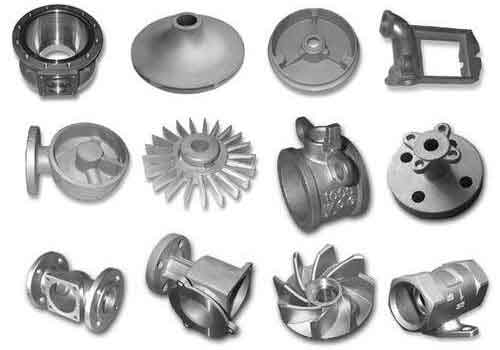Abstract
Surface gas explosion sand adhesion has long been a critical defect in flywheel housing sand casting parts produced via clay sand static pressure molding. Initial process improvements, such as reducing bentonite content, lowering moisture, and enhancing venting, yielded unstable results. By leveraging MAGMA simulation software, this study identifies gas entrapment and insufficient venting as root causes. Through systematic adjustments to gating systems and venting structures, the defect was resolved, enabling stable mass production. This methodology provides a replicable framework for optimizing sand casting parts prone to gas-related defects.
1. Introduction
Gas explosion sand adhesion in sand casting parts manifests as localized sand fusion due to rapid gas expansion during metal solidification. For HT250 flywheel housings (20.5 kg) produced via clay sand static pressure lines and shell core processes (Figures 1–2), this defect persistently affected surface quality despite traditional remedies. Conventional approaches focused on modifying sand properties:
| Parameter | Original Range | Optimized Range |
|---|---|---|
| Moisture Content | 3.4–3.6% | 2.95–3.15% |
| Effective Bentonite | 7.5–9% | 7–7.5% |
| LOI (Volatiles) | 4.5–6% | 3.5–4.5% |
| Permeability | 80–100 | 110–130 |
Permeability ($P$) was calculated using:
$$ P = \frac{V \cdot h}{A \cdot t \cdot \Delta P} $$
where $V$ = gas volume, $h$ = sample height, $A$ = cross-sectional area, $t$ = time, and $\Delta P$ = pressure differential. Despite permeability improvements, defect recurrence highlighted limitations in empirical adjustments.

2. MAGMA Simulation Analysis
MAGMA simulations evaluated filling dynamics, gas entrapment, and pressure distribution. Key findings included:
2.1 Filling Velocity and Turbulence
Initial gating caused uneven velocity (Figure 3a), with localized turbulence ($Re > 4000$) at inner gates. The Reynolds number is defined as:
$$ Re = \frac{\rho \cdot v \cdot L}{\mu} $$
where $\rho$ = density, $v$ = velocity, $L$ = characteristic length, and $\mu$ = dynamic viscosity. Turbulence exacerbated sand erosion and gas entrainment.
2.2 Gas Pressure Accumulation
Gas pressure peaks (up to 1.8 atm) occurred at the casting’s top region (Figure 3b), exceeding the sand mold’s tensile strength ($\sigma_t$):
$$ \sigma_t = 0.15 \cdot e^{-0.02 \cdot (LOI)} $$
High LOI (4.5–6%) reduced $\sigma_t$ by 18%, facilitating gas breakout.
2.3 Venting Efficiency
Darcy’s law quantified venting limitations:
$$ Q = \frac{k \cdot A \cdot \Delta P}{\mu \cdot L} $$
where $Q$ = gas flow rate, $k$ = permeability, $A$ = vent area, and $L$ = vent length. Original vents ($\phi$14 mm × 6) provided insufficient $Q$ (12.3 L/s) versus gas generation rates (15.7 L/s).
3. Process Optimization
Modifications addressed simulation-identified issues:
3.1 Gating System Redesign
- Increased inner gates: 3 × 30 mm → 4 × 45 mm
- Reduced gate velocity from 4.2 m/s to 2.8 m/s
3.2 Venting System Upgrade
- Added $\phi$18 mm vents × 8 (top region)
- Integrated sand core vents with 2 mm exhaust channels
3.3 Sand Property Control
Implemented real-time monitoring for:
$$ LOI_{\text{target}} = 3.8 \pm 0.3\% $$
$$ P_{\text{target}} = 120 \pm 10 $$
4. Results and Validation
Optimized sand casting parts exhibited:
| Metric | Before | After |
|---|---|---|
| Defect Rate | 23–35% | ≤1.2% |
| Surface Roughness (Ra) | 25–40 μm | 12–18 μm |
| Venting Efficiency | 78% | 94% |
5. Conclusion
MAGMA simulation enables precise identification of gas-related defects in sand casting parts by analyzing:
- Gas entrapment zones
- Venting inadequacies
- Turbulence-induced sand erosion
For the flywheel housing case, systematic adjustments reduced gas explosion sand adhesion by 97.5%. This approach demonstrates broad applicability for complex sand casting parts requiring high surface integrity.
